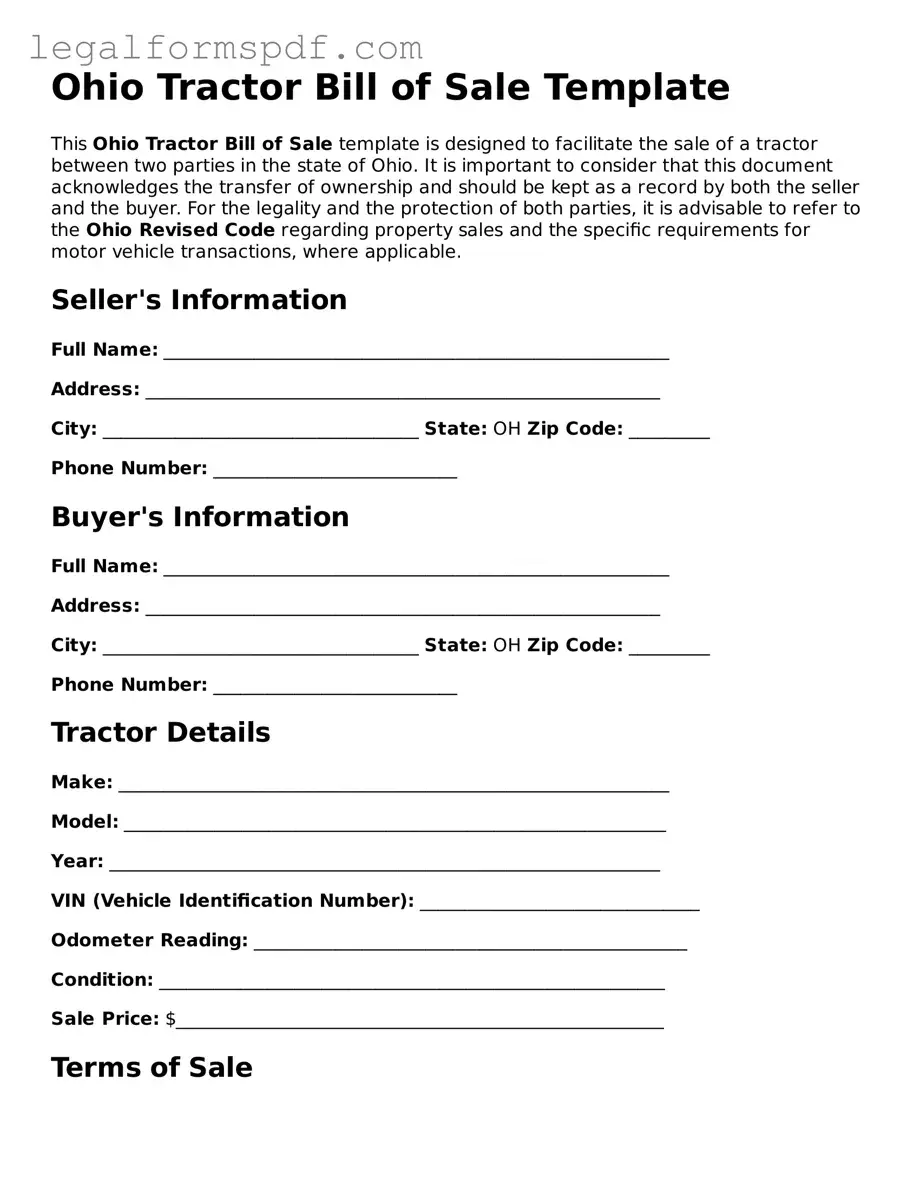Ohio Tractor Bill of Sale Template
This Ohio Tractor Bill of Sale template is designed to facilitate the sale of a tractor between two parties in the state of Ohio. It is important to consider that this document acknowledges the transfer of ownership and should be kept as a record by both the seller and the buyer. For the legality and the protection of both parties, it is advisable to refer to the Ohio Revised Code regarding property sales and the specific requirements for motor vehicle transactions, where applicable.
Seller's Information
Full Name: ________________________________________________________
Address: _________________________________________________________
City: ___________________________________ State: OH Zip Code: _________
Phone Number: ___________________________
Buyer's Information
Full Name: ________________________________________________________
Address: _________________________________________________________
City: ___________________________________ State: OH Zip Code: _________
Phone Number: ___________________________
Tractor Details
Make: _____________________________________________________________
Model: ____________________________________________________________
Year: _____________________________________________________________
VIN (Vehicle Identification Number): _______________________________
Odometer Reading: ________________________________________________
Condition: ________________________________________________________
Sale Price: $______________________________________________________
Terms of Sale
This tractor is sold in "as is" condition. The seller makes no warranties regarding the condition, and the buyer accepts the tractor with all existing faults, whether known or unknown. By signing this bill of sale, the buyer agrees to these terms and acknowledges understanding of the "as is" condition of the tractor.
Signatures
Upon agreement to the terms, conditions, and the transfer of payment from the buyer to the seller, both parties are advised to sign and date this document for it to take effect.
Seller's Signature: ____________________________________ Date: ____________
Buyer's Signature: ____________________________________ Date: ____________
Notary Acknowledgment
For additional legal protection, it is advised that a Notary Public acknowledges both signatures. The participation of a Notary Public can provide certified validity to this bill of sale and further protect both parties involved in the transaction.
State of Ohio
County of ______________________________________
On this day, ___________________________________________, before me, _____________________________, a notary public, personally appeared ____________________________________________, known to me (or satisfactorily proven) to be the person(s) whose name(s) is/are subscribed to the within instrument and acknowledged that he/she/they executed the same for the purposes therein contained.
In witness whereof, I hereunto set my hand and official seal.
Notary's Signature: ________________________________ Date: ____________
Notary's Seal:
